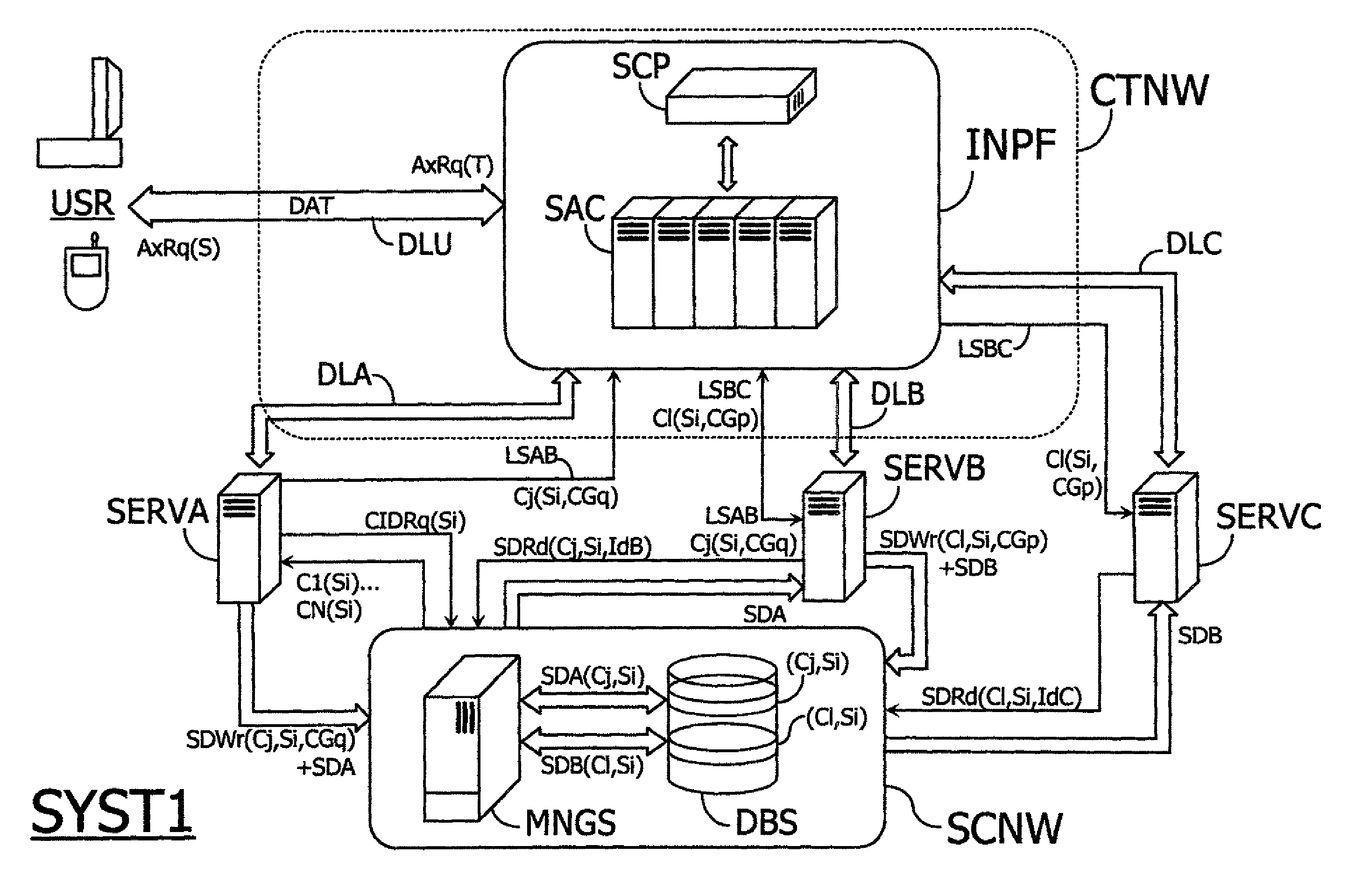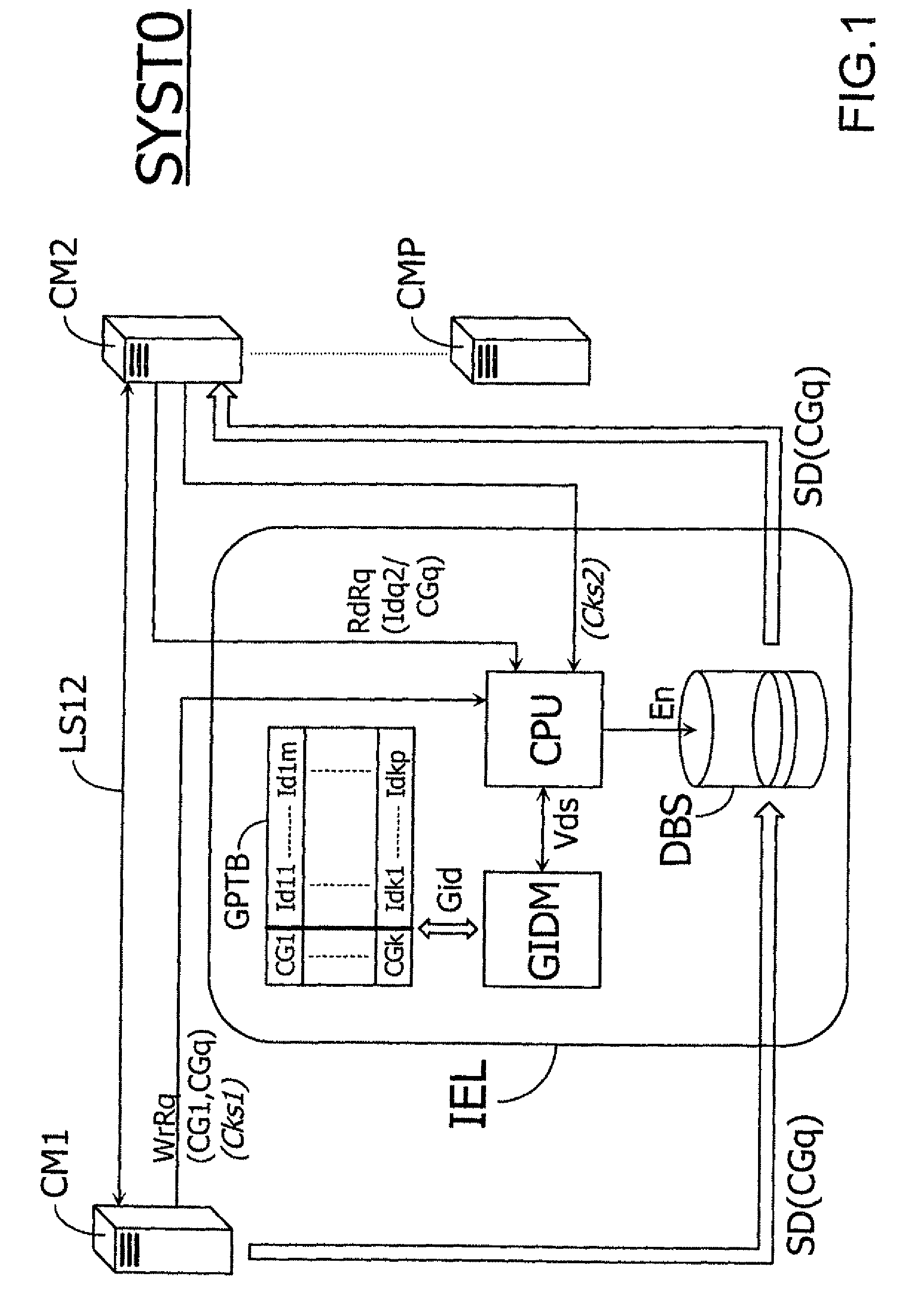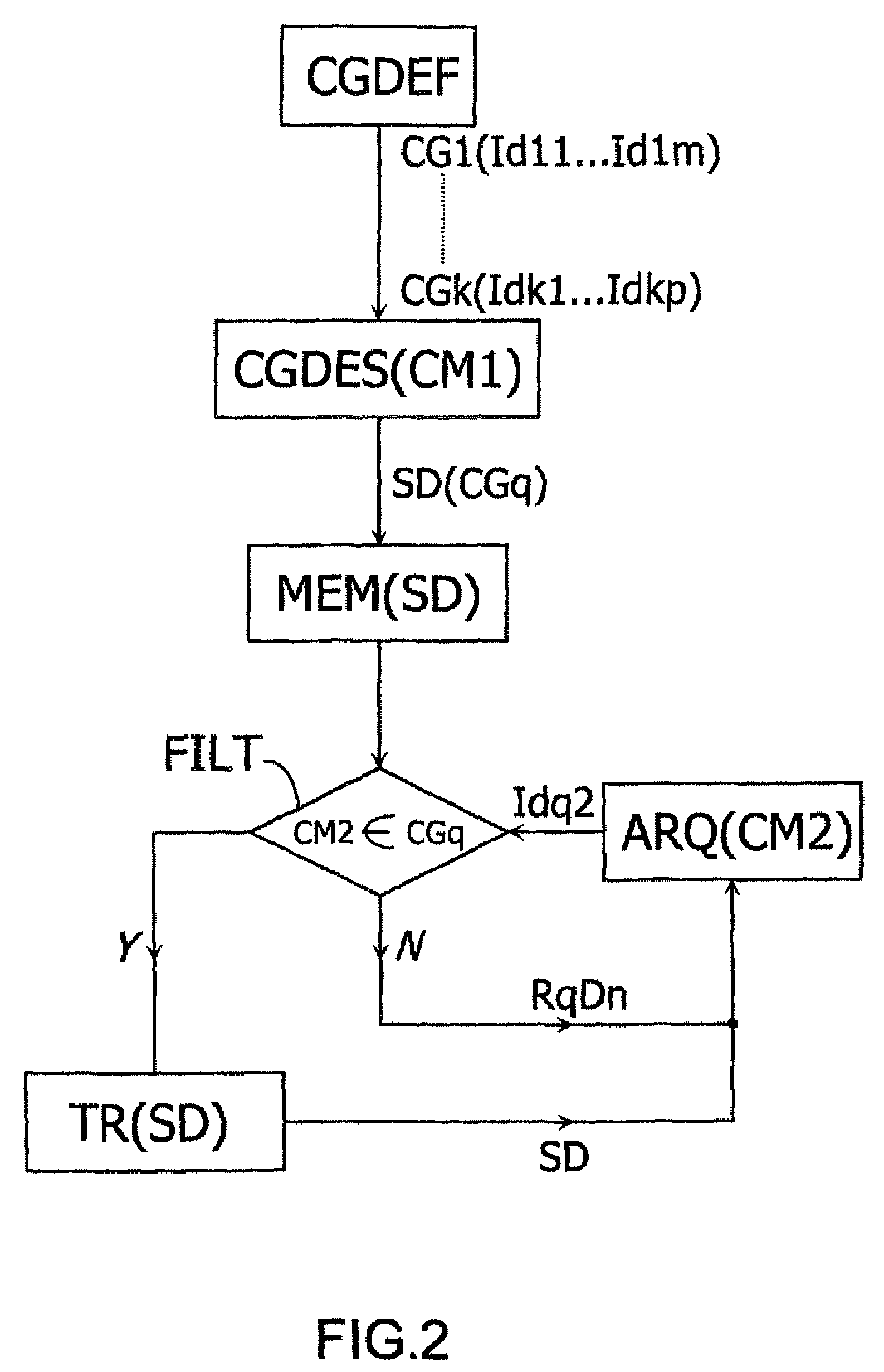Method for the transmission of information with improved perenniality
a transmission method and information technology, applied in the field of information transmission methods, can solve the problems of inability to envisage, no guarantee of the perenniality of service and significant risks to the integrity of the information stored in the auxiliary server
- Summary
- Abstract
- Description
- Claims
- Application Information
AI Technical Summary
Benefits of technology
Problems solved by technology
Method used
Image
Examples
Embodiment Construction
FIG. 1 is a schematic view of a telecommunications system SYST0 including a plurality of communications means CM1, CM2, . . . , CMP capable of communicating with one another through data links which will be set up, for example, within a main communications network formed by an RTC type switched telephony network, the system SYST0 being furthermore provided with means to implement a transmission method compliant with an embodiment of the invention. In the example described herein, the system SYST0 is dedicated to providing for transmission between data servers forming first and second communications means CM1 and CM2 implemented by the upstream and downstream customers. The term “customer” herein designates an entity drawing upon the resources of another entity in order to perform a task, each customer in this particular example implementing an autonomous server that forms one of the communications means CM1, CM2, . . . , CMP.
In compliance with an embodiment of the present invention,...
PUM
 Login to View More
Login to View More Abstract
Description
Claims
Application Information
 Login to View More
Login to View More - R&D
- Intellectual Property
- Life Sciences
- Materials
- Tech Scout
- Unparalleled Data Quality
- Higher Quality Content
- 60% Fewer Hallucinations
Browse by: Latest US Patents, China's latest patents, Technical Efficacy Thesaurus, Application Domain, Technology Topic, Popular Technical Reports.
© 2025 PatSnap. All rights reserved.Legal|Privacy policy|Modern Slavery Act Transparency Statement|Sitemap|About US| Contact US: help@patsnap.com



